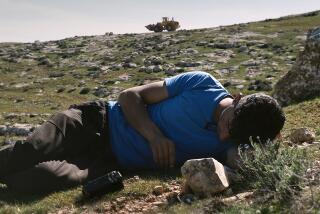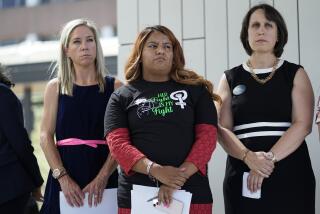U.S. Film Festival Learning to Cope With Success
PARK CITY, Utah — In this once-quaint ski town described recently by Robert Redford as “more city than park,” the 10th annual United States Film Festival concluded Sunday amid signs that it too is undergoing a not-necessarily-for-the-better transformation.
The exposure that Redford’s Sundance Institute-sponsored festival affords to independent film makers is widely regarded as beneficial, but the festival’s burgeoning size and popularity are threatening to erode the intimate, informal nature that has been the hallmark of the event.
In addition, the festival, which used to be populated almost entirely by film makers, has taken on a much more commercial atmosphere with the presence of distributors, publicists, agents, managers and studio development executives.
This year’s 10-day smorgasbord of independent films was the biggest ever--and, with about 33,000 tickets sold, the best attended.
There even seemed to be more “names” in attendance as well. Spotted during the week: Susan Sarandon, Reuben Blades, John Cusack, Michael Nesmith, David Lynch, Isabella Rossellini and surprise visitor Dr. Ruth Westheimer, who said the festival’s atmosphere reminded her of “my days at the Sorbonne.”
The festival’s expanding profile was demonstrated during Saturday night’s awards party. There was a cacophony of schmoozing that barely ebbed enough to acknowledge the winners.
First place winners in the documentary and dramatic feature categories received $2,500 from sponsor American Express and 100,000 feet of film processing, courtesy of Foto-Kem film laboratory, but got little attention from the audience as they took the stage to accept their awards.
Jennifer Fox, who took top honors for her documentary “Beirut: The Last Home Movie,” (a project 11 years in the making) could barely be heard as she made her acceptance speech.
Rob Nilsson, who directed and co-starred in “Heat and Light,” which won best dramatic feature film, didn’t try to fight the crowd’s noise and kept his remarks brief.
The scene Saturday was a far cry from the festival’s first six years as a feisty gathering of cinematic renegades, said some long-time festival-goers.
Jana Sue Memell, who, with Jonathan Sanger, co-produced the “Discovery” program shown during the festival, recalled the festival’s premiere in 1979.
“Nobody had even heard of Park City when a friend of mine was invited that year. We drove forever and found 100 people in the audience (the total attendance that year) when we got there. Today we had 100 people squished into a tiny room.”
The trademark informal parties that always followed the last film of the night were hastily arranged at a festival-goer’s condominium and always on a bring-your-own basis. It seemed that tickets could always be found for late-comers or those who couldn’t afford to pay.
It was fun, but unprofitable. And Redford, whose dedication to independent film makers is unquestioned, sought to save the festival from extinction when he bailed it out of debt four years ago.
Deborah Shaffer (“Witness to War”), whose documentary on the Sandinista revolution, “Fire from the Mountain,” was in competition, praised the festival for “treating the documentary seriously.”
But the increased crowds worry even Redford, who said, “I don’t think we can keep expanding to fill the need . . . there’s a point where we have to cut it off.”
That cut-off point may already have passed. While film makers attending the festival this year for the first time praised the fraternal environment, many regulars remarked on “how crowded” it was. What used to be informal late-night parties open to all are now planned by festival administrators and can be attended only after purchasing tickets.
For documentary award winner Fox, the late-night parties provided an important link with other film makers. “Our work is such an isolating experience, to be able to talk to other film makers at these parties is like therapy.”
Despite the apparent growing pains experienced by the expanding festival, it remained the most important single festival for the independent film maker in the United States, said Lawrence Smith, who has worked as a festival programmer for all of the past 10 years.
“It’s still the best way to meet and communicate with other film makers,” he said. “I love it.”
More to Read
Only good movies
Get the Indie Focus newsletter, Mark Olsen's weekly guide to the world of cinema.
You may occasionally receive promotional content from the Los Angeles Times.










